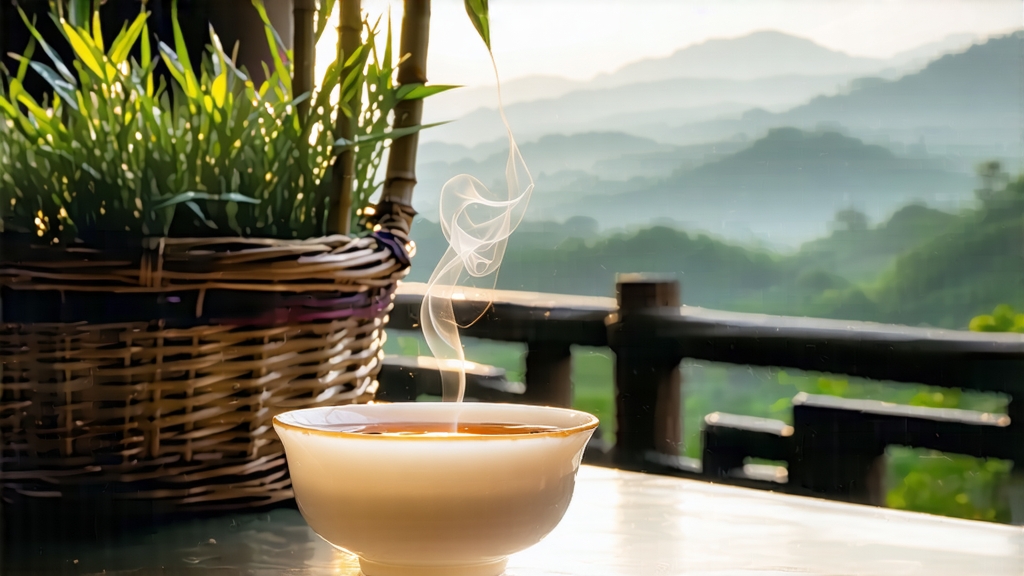
When Chinese tea lovers speak of “white tea,” they are not referring to a pale infusion of any leaf, but to a precise family of minimally processed teas whose birthplace is the northeastern corner of Fujian province. Among that family, Fuding Silver Needle—Bai Hao Yin Zhen in Mandarin—sits at the apex, the imperial scepter of white tea. Composed solely of unopened buds plucked during a fleeting spring window, the tea looks like a cache of slender ivory slivers, each dressed in a silvery fleece so dense it seems spun by moths. In the cup it releases a liquor the color of first morning light, a fragrance that hovers between fresh hay and mountain orchid, and a sweetness so clean it feels almost transparent. To understand why this modest-looking bud commands such reverence, one must follow it from myth-shrouded past to meticulous present, then into the quiet ritual of brewing where it finally unveils its lunar glow.
Historical whispers place white tea’s origin in the Song dynasty (960-1279), when emperor Huizong—an aesthete who painted birds and wrote treatises on tea—praised “white buds among the tribute cakes.” Yet those cakes were dark, pressed bricks; the bud-only Silver Needle we know today did not crystallize until the late Qing, when Fuding’s growers abandoned cake-making in favor of loose, sun-withered buds destined for coastal export. Foreign merchants christened it “Silver Needle” for the way the downy tips glinted like surgical steel. By 1891 the tea was winning gold medals at international fairs in London and Panama, but civil war and revolution soon clipped its wings. Only in the 1960s did state tea institutes revive ancestral withering courts, and only after 2005—when white tea’s antioxidant profile caught the eye of health researchers—did Silver Needle reclaim its luxury status. Today, European sommeliers pour it by the glass in Michelin restaurants, while Beijing diplomats gift it in lacquered boxes as soft-power currency.
Fuding County, wedged between the East China Sea and the Wuyi foothills, enjoys a maritime monsoon climate: mild winters, fog-cooled springs, and acidic red laterite soil rich in quartz. These conditions force the Da Bai (Big White) and Da Hao (Big Down) cultivars to grow slowly, stockpiling amino acids and fuzzy trichomes that protect the dormant bud from salt-laden winds. Authentic Silver Needle may only be harvested for about ten days between mid-March and early April, when the bud reaches 2.5–3 cm but has not yet unfurled into a leaf. A skilled plucker rolls the bud between thumb and index finger so it drops silently into a bamboo basket, preventing the microscopic “needle fracture” that would oxidize the cut end. By law, the pluck must happen before 10 a.m., while dew still glistens and ambient humidity hovers above 70 %—nature’s own withering accelerator.
Once back at the factory, the buds are spread in single layers on bamboo trays stacked like sliding doors in a sun-warmed corridor. For the next 36–48 hours they undergo nothing more violent than air: natural withering under shade cloth that filters ultraviolet rays yet invites a gentle breeze. Master tea makers call this “letting the leaf drink wind.” Every two hours they rotate the trays, testing bud suppleness by pressing a needle between lips; when the spine snaps rather than bends, withering is complete. A final 20-minute bake at 40 °C halts residual enzymes, yet the temperature is so low that the trichomes stay intact, giving the finished tea its trademark “snow on green jade” appearance. No rolling, no fixing, no shaping—Silver Needle is tea in a state of arrested becoming, a bud forever poised on the verge of opening.
Because the leaf is structurally intact, brewing must coax rather than coerce. Begin with mountain spring water whose total dissolved solids sit below 80 ppm; hard water flattens the ethereal aromatics. Pre-warm a tall glass gaiwan or thin-walled Jingdezhen porcelain pot so the buds meet no thermal shock. Use 3 grams—about two heaping teaspoons—for every 120 ml of water, then lower the kettle to 80 °C. The first infusion, 45 seconds long, is a “wake-up bath”